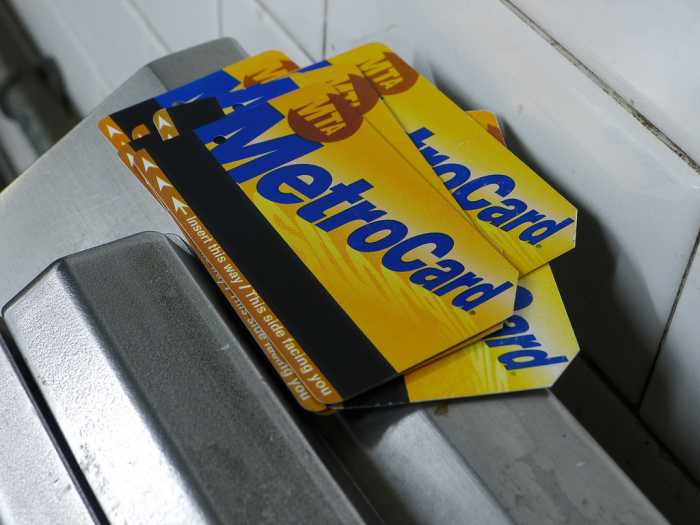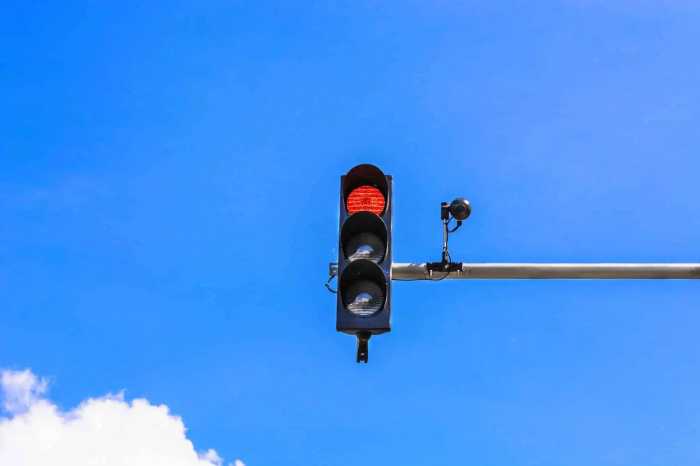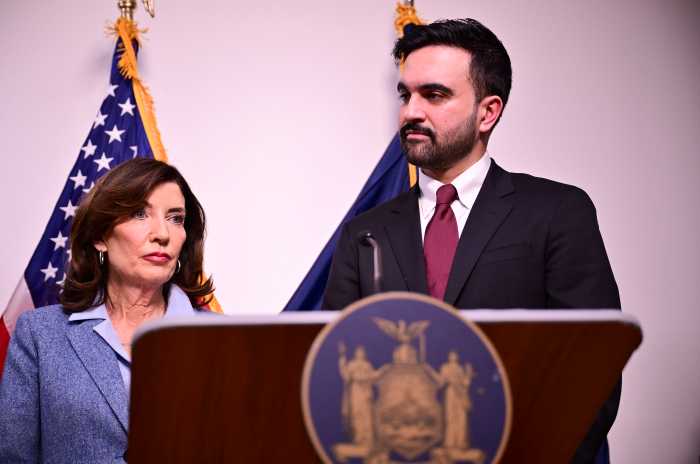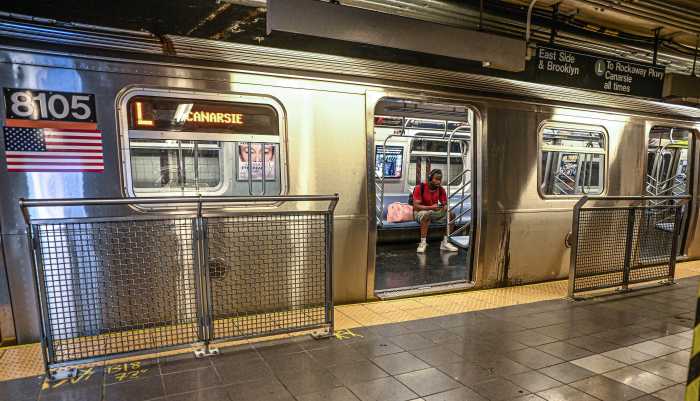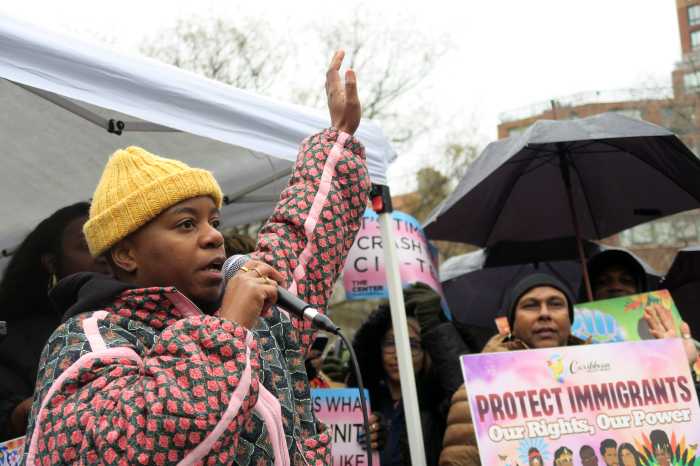
Gov. Andrew Cuomo on Wednesday heralded new efforts from the MTA to improve its beleaguered subway system: installing smooth, continuously welded tracks.
Roughly half of the subways’ lines use tracks that are built with segments of rail jointed together — though other subway systems around the world have moved toward utilizing longer, smoother sections of rail as a way to decrease track maintenance and related delays while also providing a quieter, less rattle-filled ride for commuters.
The MTA is in the process of playing catch up, tapping into funds from its $836 million Subway Action Plan to increase the installation of such rails — all this on the heels of reports that challenge the premise of the Subway Action Plan itself.
“Over the years, the gap between those rails gets bigger; the alignment gets worse, the disruption of the wheels that go over those bumps gets worse,” Cuomo said during a tour of the tracks at the Avenue M station in Midwood. “It’s uncomfortable for the riders, but it’s actually worse for the equipment. It degrades the equipment and most significantly, it can trigger what we call a false red signal,” which can bring train service on a line to a halt.
The subway system was built with 39-foot segments of rail, but the MTA can now use continuously welded rail to increase the segments’ length by up to 10 times, or 390 feet. Out of the system’s 660 miles of track, 440 miles are able to accommodate continuously welded rail. Portions of the system that feature curves, certain inclines or declines, or elevated tracks, must rely on the smaller, jointed segments, according to the MTA.
Of the 440 eligible miles, about 387 miles of subway track already feature the longer rails. Funds from the Subway Action Plan will go toward replacing most of the last eligible sections, with the MTA increasing its installation projections from 19.9 miles to 39.8 miles of track by the end of the year.
While the Subway Action Plan relies on the hiring of thousands of new workers, recent reports show that the MTA’s own safety protocols are bigger factors in slowing down trains and limiting the capacity of the system. In response to a deadly 1995 train crash on the Williamsburg Bridge, the MTA has more recently begun installing speed restrictors on tracks. Meanwhile, the MTA has instituted slow zones on tracks adjacent to where crews are working as a way to increase crew size and improve safety. NYC Transit president Andy Byford is currently reviewing the impact the speed restrictors have had on service.
MTA chairman Joseph Lhota, who attended Wednesday’s tour, said the policies do “not at all” diminish the relevance of the Subway Action Plan.
“It is very important: we never want to have a situation where safety is not the number one priority,” said Lhota, speaking on safety for both workers and riders. “What we need to do is put in more modern signal systems; what we need to do is to get new, better equipment and then we’ll be able to adjust the speeds.”
“So, yes, our actions have actually slowed the trains down,” Lhota continued. “But we’ve done that to maintain safety and to maintain life.”



